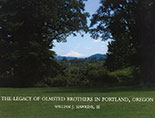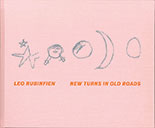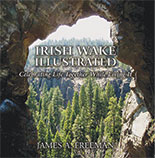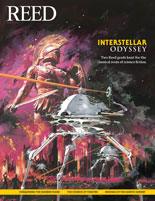
IRIS login | Reed College home Volume 94, No. 1: March 2015
Reediana Briefs

Cr

一个

Th

Real Mysteries: Narrative and the Unknowable, by Porter Abbott ’62 (Ohio State Press, 2013). In this groundbreaking book, Porter revisits the ancient theme of what we cannot know about ourselves and others, but shifts the focus from the representation of this theme to the ways narrative can be manipulated to immerse “the willing reader” in the actual experience of unknowing. This difficult and risky art, practiced so inventively by Samuel Beckett, was also practiced by modern writers such as Gabriel García Márquez, Herman Melville, and Toni Morrison, as well as by writers such as Gertrude Stein and Pseudo-Dionysius the Areopagite. “In accessible language, Abbott shows how narrative fiction may create spaces in which our ignorance, when it is by its nature absolute, can be not only acknowledged but felt, and why this is important.”
“The ‘Domestication Syndrome’ in Mammals: A Unified Explanation Based on Neural Crest Cell Behavior and Genetics,” by Adam Wilkins ’65, was published in Genetics in July 2014. The “domestication syndrome” in animals, a problem bequeathed by Darwin, remained unsolved for more than 140 years, and Adam’s work has received tremendous coverage by the international press. The article is available at www.genetics.org.

Falling Behind? Boom, Bust and the Global Race for Scientific Talent, by Michael Teitelbaum ’66 (Princeton University Press, 2014). Michael builds his response to the questions about the United States’ current position in the global race for scientific and engineering talent by examining historical precedent. He highlights five episodes of alarm about “falling behind,” which he traces back to the end of World War II. Claims from employers and educators, widely embraced by mainstream media and political leaders, he says, have figured prominently in recent policy debates about education, federal expenditures, tax policy, and immigration. Falling Behind offers careful examinations of the existing evidence and of its use by those involved in these debates.

我们

A Companion to Urban Anthropology, by Donald Nonini ’68, editor (Wiley-Blackwell 2014). This book, which Donald describes as an attempt to be a paradigm-defining compendium of concept essays for the urban anthropology of the future, presents a collection of original essays from international scholars on key issues in urban anthropology and broader cross-disciplinary urban studies. It features newly commissioned essays from 35 leading international scholars in urban and global studies and includes essays in classic areas of concern to urban anthropologists such as built structures and urban planning, community, security, markets, and race. Forthcoming is his book “Getting By”: Class and State Formation among Chinese in Malaysia (Cornell University Press), and he is writing a study of the local food movement in the United States, which he intends to complete by 2016.

欧
“Way Out Beyond the Diminished Row,” an article by Gerson Robboy ’69, was published in Northwest Accordion News, summer quarter 2014 (Vol. 24, No. 2). The last row of buttons on the left side of the accordion plays the diminished chords, Gerson explains, and in his article he discusses putting together multiple chords in order to finger chords for which there is no button—“hence, buttons out beyond the diminished row.”


Wi
Chihuly Drawings, by Matthew Kangas ’71 (Museum of Glass, 2015). Matthew’s book catalogues exhibitions of Dale Chihuly’s work over 35 years, surveying more than 180 drawings that will be showing at the Museum of Glass in Tacoma, Washington beginning this month. Matthew also serves as contributing editor for a number of publications, including Art in America, Sculpture, Art Guide Northwest, and Visual Art Source, an online weekly newsletter.

Eggs Satori, by Karen Greenbaum-Maya ’73 (Kattywompus Press, 2014). Five years ago Eggs Satori was chosen as a finalist in a competition held by PuddingHouse Publications, but its editors were hit by health crises, says Karen, and put their publications on permanent hold. When the editor of Kattywompus Press took a look at Karen’s prose poems, she accepted not only Burrowing Song (published in 2013) but also Eggs Satori. “Like Beethoven (in this regard and no other), the first is now the second.” In addition, Karen’s poem “Our Lady of the Red Potatoes,” which she worked on for six years, and is not included in this edition, has been nominated for the 2016 Pushcart Prize.

R Quick Syntax Reference, by Margot Tollefson/Conard ’73 (Apress, 2014). Margot’s book is a reference detailing the intricacies of the R language. “Not only is R a free, open-source tool, R is powerful, flexible, and has state of the art statistical techniques available.” With the many details which must be correct when using any language, this book makes using R easier. R Quick Syntax Reference is for statisticians and other data analysts who are starting to use the R language. It is also for veteran R users who want a quick reference to the language—“an excellent choice for the busy data scientist who likes to experiment with new ways of analysis and who needs the flexibility of the data editing available in R.”

New Turns in Old Roads, the third book of photography by Leo Rubinfien ’74, was published by Taka Ishii Gallery in 2014. In addition, Chewing Gum and Chocolate, a posthumous book of photographs by Shomei Tomatsu, one of Japan’s foremost 20th-century photographers, edited by Leo, was published by Aperture Foundation in 2014.

Th

Th
“George D. Leman: An Arts and Crafts Vernacular Rediscovered,” by Doug Forsyth ’77 (American Bungalow, December 2014). This article about an unsung Buffalo builder, who stands tall in the company of Wright and Olmsted, is the 11th and final piece in Doug’s series on historic districts in Rust Belt cities and inner-ring suburbs.

Irish Wake Illustrated: Celebrating Life Together While Living It, by James Freeman ’78 (ebook, 2014). James has published a collection of interconnected short stories, new and revised, peopled by car detailers, carpet cleaners, hospice volunteers, soldiers, teachers, fishermen, and just plain real-life fictional folk. His friend and mentor, writer Bill Hotchkiss, described the collection as the work of a master storyteller, “scintillating, heartbreaking, and often heartwarming.” James also contributes his photography to the book. A second publication is the textbook English Composition II, Best Practices: American Literature and Culture Theme (BVT Publishers, 2015). His children’s book, Lady and Sierra’s Storage Shed Summer, is available as an ebook at bn.com and Amazon.

Th

The Dung Ball Chronicle, by Wayne Miller ’83 (Kindle ebook). Wayne released a new sci-fi-satire, which updates his previous ebook and adds a second volume (learn more). Things chronicled are not what they seem. “For one, the language is all wrong: The titular dung balls are actually made of hallucinogenic mold, cultivated for relaxation by members of an intelligent bug-like alien species, but providing an immersive escape for the small number of otherworld abductees brought back to the bugs’ world. The bugs are not especially arthropodic, but a cross-melding of earthly phyla, and are more socialist than hive social.”

Br
“Venetian Vagabonds and Furious Frenchmen: Nationalist and Cosmopolitan Impulses among Europeans in Galata,” a paper that takes as its subject a homicide in 18th-century Istanbul, was published by Julie Landweber ’93 in The Journal of Ottoman Studies (issue 44, 2014).

Portland on the Take, by J.B. (Benji) Fisher ’94, coauthor (History Press, 2014). With unprecedented access to police investigative files, Benji and J.D. Chandler bring Portland’s days of civic corruption and hidden murders out of the shadows and shed new light on Portland’s turbulent mid-20th-century past.
The essay “Monuments to Maritime Labor: the Dhow, Migration, and the Architecture of the 2022 Qatar World Cup,” by Laura Diamond Dixit ’04, was published in the Avery Review. The essay is about the working conditions of Nepali migrant workers, the juridical structures that shape migration between South Asia and the Persian Gulf, and the symbolic representation of a transnational Indian Ocean history in the 2022 World Cup. Laura is a PhD student in the Columbia University Graduate School of Architecture, Planning and Preservation.

Seagull (Thinking of You) with Family and Away Uniform, by Tina Satter MALS ’04 (53rd State Press, 2013). Tina’s first collection of plays includes Seagull (Thinking of You), a personal look at performance, failure, and attempted love; Family, which was named a top show in 2009; and Away Uniform. Tina directed students and alumni in readings from Seagull (Thinking of You) for the opening of Reed’s Performing Arts Building in 2013.

圣
“Checking Email Less Frequently Reduces Stress,” an article coauthored by Kostadin Kushlev ’08, was published in Computers in Human Behavior in February, 2015. Kostadin’s research on the relationship of email and stress made headlines in the Guardian, the New Republic, and the Huffington Post. The findings were that limiting the frequency of checking email throughout the day reduced daily stress; that lower daily stress predicts greater well-being; and that the frequency of checking email did not directly impact other well-being outcomes. Kosta is a PhD candidate and Vanier scholar in psychology at the University of British Columbia.

哈

14: Dred Scott, Wong Kim Ark & Vanessa Lopez, by Roland Wu ’13 (2014, Graham Street Productions). This documentary explores the recurring question of who has the right to be an American citizen and examines the citizenship clause of the 14th Amendment through the lives of three ordinary and extraordinary American families who changed history by challenging the status quo. Roland has made three other documentaries, La Fragua; Edna Vazquez: Portrait in Three Colors; and There Are No Birds in the Nests of Yesterday. See more at www.rolanddahwen.com.

LATEST COMMENTS
steve-jobs-1976 I knew Steve Jobs when he was on the second floor of Quincy. (Fall...
Utnapishtim - 2 weeks ago
Prof. Mason Drukman [political science 1964–70] This is gold, pure gold. God bless, Prof. Drukman.
puredog - 1 month ago
virginia-davis-1965 Such a good friend & compatriot in the day of Satyricon...
czarchasm - 4 months ago
John Peara Baba 1990 John died of a broken heart from losing his mom and then his...
kodachrome - 7 months ago
Carol Sawyer 1962 Who wrote this obit? I'm writing something about Carol Sawyer...
MsLaurie Pepper - 8 months ago
William W. Wissman MAT 1969 ...and THREE sisters. Sabra, the oldest, Mary, the middle, and...
riclf - 10 months ago